Actualidad
 Ubrique Lights Up: Official Presentation of the Novillada with Picadores
Ubrique Lights Up: Official Presentation of the Novillada with Picadores
24/02/2025
 Borja Jiménez Shines at the "Las Meninas de España" Awards for His Success at Sa
Borja Jiménez Shines at the "Las Meninas de España" Awards for His Success at Sa
18/02/2025
 The bulls return to Los Barrios with a star-studded corrida on 17th May
The bulls return to Los Barrios with a star-studded corrida on 17th May
14/02/2025
 Julio Méndez Joins the Madrid Novillada Circuit 2025
Julio Méndez Joins the Madrid Novillada Circuit 2025
29/01/2025
 Rejoneo and Youth Take Centre Stage in Constantina (Seville)
Rejoneo and Youth Take Centre Stage in Constantina (Seville)
23/01/2025
 A Monumental Bullfighting Fair Near Toledo: The Feria del Milagro in Illescas
A Monumental Bullfighting Fair Near Toledo: The Feria del Milagro in Illescas
19/12/2024
Categorías del blog
Top ten Bullfighters
Top ten Bullrings
Top ten Farms
A Horse Art: Rejones
Published : 2016-08-12 00:00:00
Categories : Fighting Bulls , Toreros
A bullfighter called rejoneador
To speak on horseback we begin to define; which it is a bullfighting art executed by a bullfighter called rejoneador, riding a horse and tamed a wild bull fighting. The first news we have about the world of bullfighting dating from
the thirteenth century and known even in the reign of Felipe IV. In the eighteenth century were the nobles who could ride a horse. The origin of the chivalrous bullfights have a lot to do with the boom mounted to the genet because her long stirrups of the Middle Ages which were used by knights in battle are abandoned, for a much shorter temper the which they allowed bring your knees bent and better master the horse.
In the chivalrous bullfights, which "rejoneaba" was based on mobility and dressage to circumvent the bull and thus submit to the punishment of the shank or the "banderillas", very similar to the actual.
The decline of bullfighting on horseback arrives with the Bourbons in Spain, while the nobility abandoned the practice of bullfighting on horseback, the riders disappear from the streets but not the countryside, while Portugal was still alive the practice of bullfighting in public.
The resurrection of bullfighting on horseback in Spain comes from of Antonio Cañero, a native of Cordoba (1885-1952): Army commander and riding instructor in a riding their property was a true revolutionary and teacher. He inherited from his father tying the horse, sentimental and professionally .. Bullfighting as a hobby, but due to several serious accidents, was devoted to bullfighting on horseback in charitable bullfight. Although it is known that suffered tremendous caught like that destroyed both thighs in Cordoba in January 1917, the rest of his biography invites to think more about the vocation that in the circumstances, given the family passion for horses, deep knowledge of that world, the weight of the studs in the city of his birth and coinciding with large Portuguese bullfighters, as Ruy Camara, master of Peruvian mythical land of Conchita Cintron.
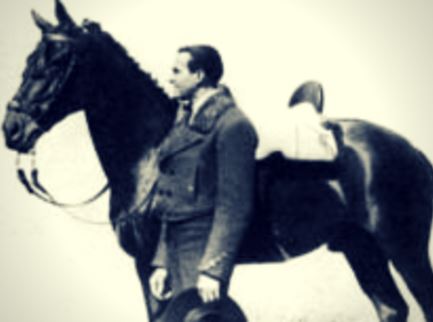
Antonio Cañero, debuted on October 14, 1921, and since that day pioneer banderillear two hands and kill with the sword from the horse, if not terminated the dismounted task. Wearing a then novel, short dress suit and hat Cordoba, he created school greats as Joao Nuncio, Simao de Vega, Jose Garcia Carranza and Juan Belmonte.
Antonio Cañero, Cordoba great rider, was presented for the first time as a professional in the San Sebastian bullring on September 2, 1923, wearing cowboy costume. With over 60 presentations it retires in 1935 beginning a tradition which continues today.
Shows a scene from the "Tiera de Toros" film shot in the farm "Córdoba La Vieja" by Antonio Cañero and French actress Musidora, around 1925. Video
Leading figures in the art of bullfighting on horseback:
Simao Da Veiga, João Nuncio, Conchita Cintrón, Duque de Pinohermoso, Álvaro Domecq y Díez, Ángel y Rafael Peralta, Álvaro Domecq Romero, José Samuel Lupi, Manuel Vidrié, João Moura, Fermín Bohórquez Escribano, Javier Buendía, Antonio Ignacio Vargas, Diego Ventura.
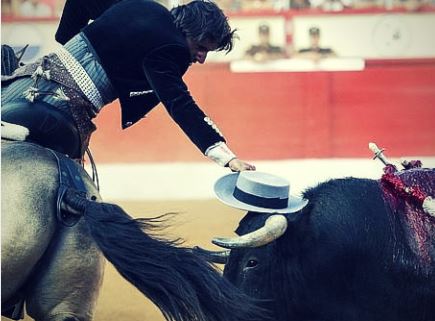

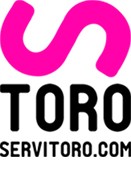



































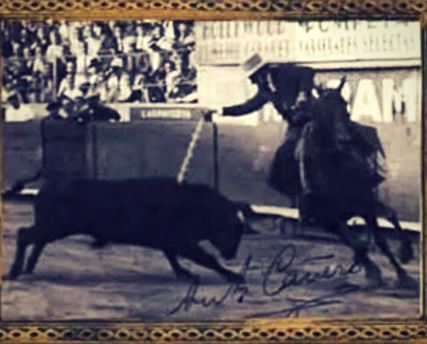
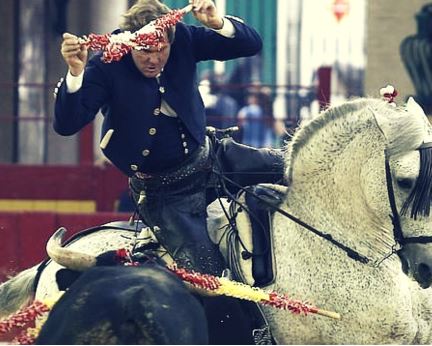
 Copyright © Servitoro. All rights reserved. Web design:
Copyright © Servitoro. All rights reserved. Web design: 